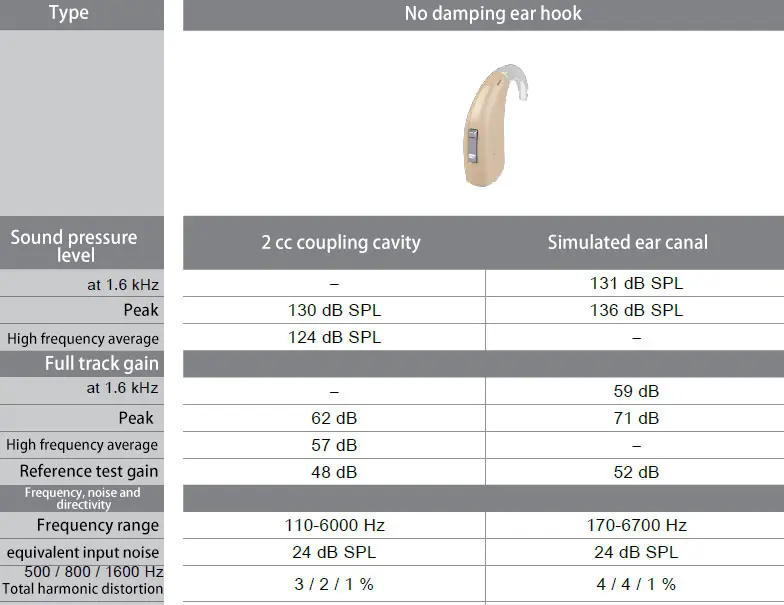
For Hearing instrument specialists, a “good” hearing aid must be evaluated and tested scientifically and objectively. Each hearing aid is subject to a series of tests recorded in a report before leaving the factory (see the figure below). Only by considering these indicators comprehensively can a “good” hearing aid be selected

01 Saturation Sound Pressure Level
Also known as maximum sound output, it reflects the power of the hearing aid. Internationally, hearing aids are divided into five categories according to their saturation sound pressure level: low power, medium power, medium-high power, high power, and extra-high power hearing aids. When choosing, users should select different power hearing aids according to their hearing loss degree.
02 Full-scale Voltage Gain
It mainly indicates the amplification capability of the hearing aid. The higher the value, the stronger the amplification capability of the hearing aid.
03 Frequency Range
It refers to the range of frequencies that the hearing aid can amplify effectively. The larger the range, the closer it is to the frequency range of a normal ear.
04 Equivalent Input Noise
It refers to the thermal noise generated by the hearing aid’s amplification circuit during operation. It is generally controlled below 30 dB SPL. The smaller the data, the smaller the noise.
05 Harmonic Distortion
It is used to measure the fidelity of the hearing aid to sound. The national standard stipulates: for behind-the-ear and in-the-ear hearing aids, total harmonic distortion < 5%. The smaller the value, the higher the fidelity of the hearing aid to sound.








